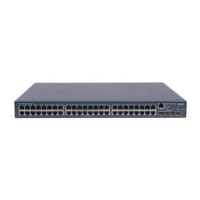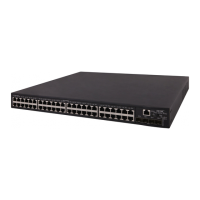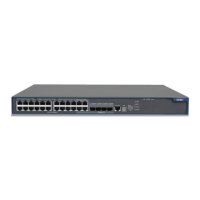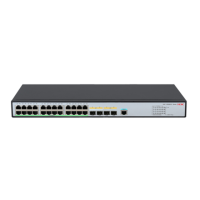1-1
1 MSTP Configuration
This chapter includes these sections:
z Overview
z Introduction to STP
z Introduction to RSTP
z Introduction to MSTP
z MSTP Configuration Task List
z Configuring MSTP
z Displaying and Maintaining MSTP
z MSTP Configuration Example
Overview
As a Layer 2 management protocol, the Spanning Tree Protocol (STP) eliminates Layer 2 loops by
selectively blocking redundant links in a network, and in the mean time, allows for link redundancy.
Like many other protocols, STP evolves as the network grows. The later versions of STP are the Rapid
Spanning Tree Protocol (RSTP) and the Multiple Spanning Tree Protocol (MSTP). This chapter
describes the characteristics of STP, RSTP, and MSTP and the relationship among them.
Introduction to STP
Why STP
STP was developed based on the 802.1d standard of IEEE to eliminate loops at the data link layer in a
local area network (LAN). Devices running this protocol detect loops in the network by exchanging
information with one another and eliminate loops by selectively blocking certain ports to prune the loop
structure into a loop-free tree structure. This avoids proliferation and infinite cycling of packets that
would occur in a loop network and prevents decreased performance of network devices caused by
duplicate packets received.
In the narrow sense, STP refers to IEEE 802.1d STP; in the broad sense, STP refers to the IEEE 802.1d
STP and various enhanced spanning tree protocols derived from that protocol.
Protocol Packets of STP
STP uses bridge protocol data units (BPDUs), also known as configuration messages, as its protocol
packets.
STP-enabled network devices exchange BPDUs to establish a spanning tree. BPDUs contain sufficient
information for the network devices to complete spanning tree calculation.
In STP, BPDUs come in two types:
z Configuration BPDUs, used for calculating a spanning tree and maintaining the spanning tree
topology.

